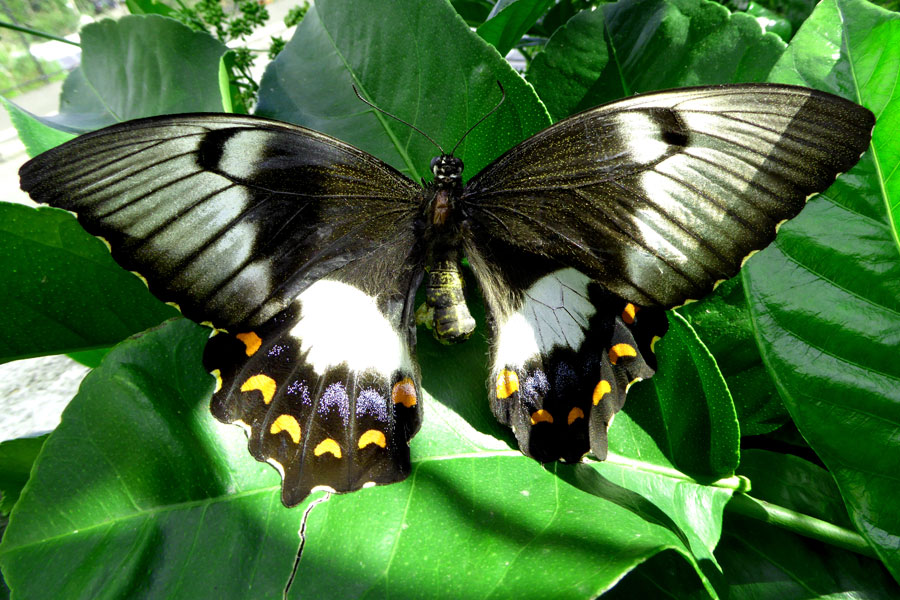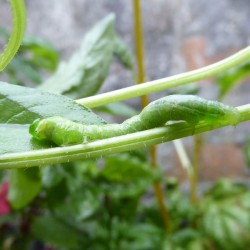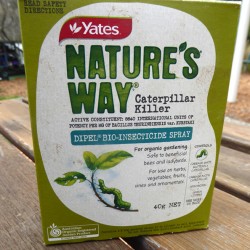Orchard swallowtail

Who says that pests have to be ugly?
The adult stage of this animal is a beautiful butterfly. Indigenous to eastern Australia and PNG these butterflies have a wingspan of up to 14 cm. They are mostly black and white with red, orange and blue patterns on their back wings.
The larvae is a caterpillar, up to 6 cm long. In the younger stage it looks black and white, later stages are green – all of them are covered with wart-like tubercles.
The caterpillar feeds on the leaves of introduced and native citrus trees. In our garden this means the lemon, the lime and the finger-lime are affected.
It’s usually enough to monitor the trees and collect the caterpillars by hand to keep them at bay. They don’t do too much damage anyway. Birds and predatory wasps prey on them. In case of a serious infestation, a bacterial spray can stop these caterpillars in their tracks.
Dealing with caterpillars
Caterpillars are the larvae of butterflies and moths. They are voracious eaters can can easily destroy a crop. The two most common caterpillars we deal with in our garden are the cabbage butterfly larvae and the larvae of the tomato bud worm. Preventive measures to avoid caterpillar problems Plant companion plants! This confuses the parent [more]
Dipel
Dipel is a product used to control caterpillars. It is approved for use in organic gardening. It is made from naturally occurring bacteria (Bacillus thuringiensis) and is safe on bees, ladybirds, birds, fish, mammals and pets. Dipel has no withholding period: vegies, fruit and salad ingredients can be washed and eaten immediately after spraying. [more]

